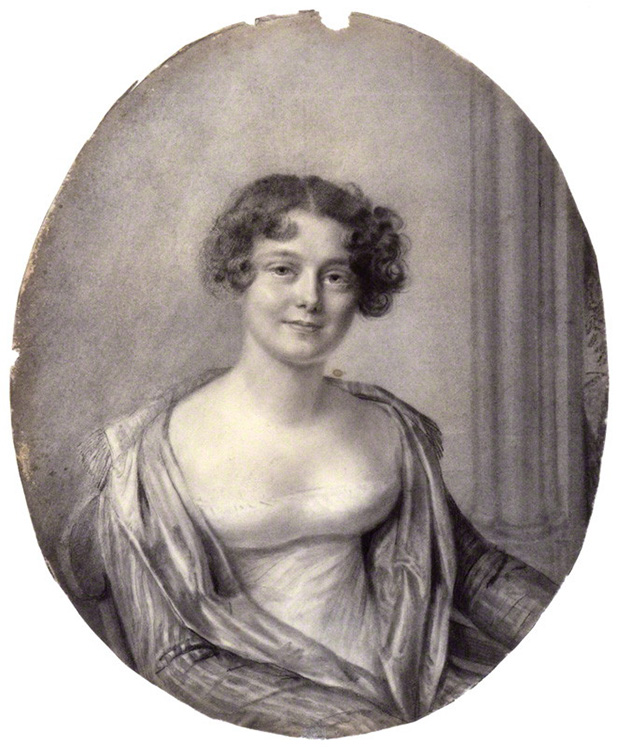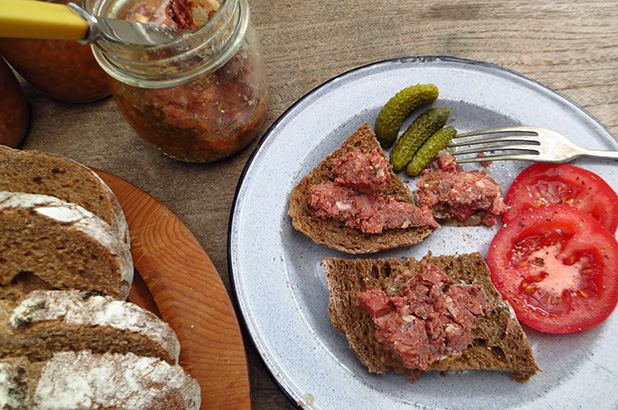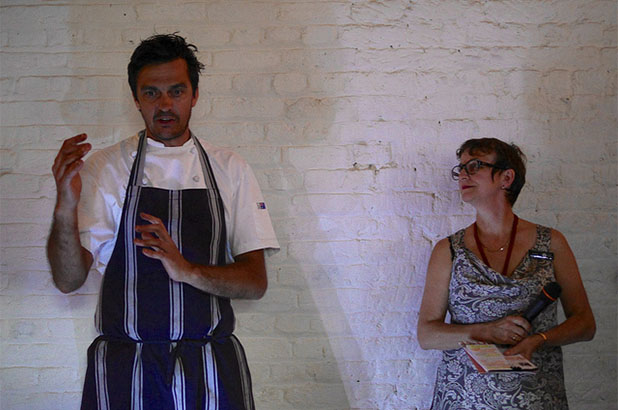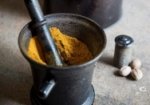But of all dishes ever brought to table, nothing equals that of the steamer. No one can tell what a steamer is unless it has been tasted: it indeed affords an excellent repast. Australia, Henry Melville, 1851.
Following Scott’s cry of Tallyho! last week, and the focus on wild game, we salute the kangaroo (yet again), colonial style.
The tail of the kangaroo makes excellent soup; the haunch is tolerable venison, but, like most really wild venison, it is too lean. A good bushman, or a black, knows, however, where to find a certain portion of fat when he is about to make a hunter’s dish, which might with propriety be called an Australian kabaub. The directions are as follows:—Skewer, or skiver (to use my informant’s stronger word), skiver alternate slices of lean and fat on your ramrod, roast at a fire that any native will make with two sticks, or yourself with a flash of gunpowder, (if you have no match-box;) and if you happen to be hungry you will not require knife or fork, salt, pepper, or pressing. Kangaroo “steamer” is another bush-dish—a sort of haggis of venison and salt pork, very popular with those who have time and patience for the culinary process called simmering. Godfrey Charles Mundy, Our Anitopdes. 1852.
For bushies and the likes of Lady Jane
The uniquely Australian ‘steamer’ emerged from the colonies in the early 1800s. According to food historian Barbara Santich (Bold Palates 2012), the first written reference to the kangaroo steamer was from Charles Jeffreys in 1820 who described ‘the hind quarters of a kangaroo cut into mince-meat, stewed in its own gravy, with a few rashers of salt pork … commonly called a steamer’. It was a very practical and accessible dish, presumably enjoyed across all classes, as kangaroo meat and salt-pork were inexpensive alternatives to farmed livestock.

Jane, Lady Franklin, Amélie Romilly, chalk, 1816. NPG 904. © National Portrait Gallery, London. Licensed under CC BY-NC-ND 3.0
The steamer was by no means reserved for poorer tables; Lady Jane Franklin was served a version of the steamer when she and her husband, governor of Tasmania (then Van Dieman’s Land) John Franklin, dined at the Commandant’s table in Port Arthur in March, 1837. It appears from her shorthand that the soup was questionable, but was clearly impressed enough with the steamer to describe it and its method of preparation in her journal,
Excellent dinner [at the Commandant, Captain Booth’s cottage], kangaroo soup ? [questionable], but steamer excellent. Is made by layer of pork then layer of thin bits of kangaroo, sprinkled with fine pot herbs, or what is better with nutmeg and so on, made into a round, like a small fillet of veal, no water, but steamed by its own gravy – was very good.
From Lady Franklin’s description it almost sounds hamburger or rissole-like, ‘made into a small round’ or may mean rolled, involtini style, with the kangaroo layer forming a forcemeat or stuffing. Godfrey Mundy’s reference to it being a sort of haggis supports it being a minced meat dish. The steamer still had a place in the colonial repertoire in 1864 when Edward Abbott published The English and Australian cookery book, for the many and the upper ten thousand, which included three versions, including one from a Mrs Sarah Crouch, which was awarded the Prize Medal at the Exhibition of 1862. Abbott suggests it be served ‘with sippets of toasted bread’ or for ‘steamer superlative’ garnished with nicely-fried balls of forcemeat’ (breadcrumb based dumplings).
Jugging
Kangaroo tail soup and the steamer stand testament for the way colonists adapted native ingredients to their familiar cooking styles – oxtail soup was an English classic, and the ‘steamer’ style of cooking was traditionally known as ‘jugging’, (jug being an alternative term for a stone jar). Jugged hare or pigeon were favoured dishes in Britain in the 1700s, and Jugged Wallaby was featured in cookbooks and on Sydney menus into the twentieth century. It was served to a delegation in London in 1910, from frozen wallaby meat ‘supplied from the Antipodes’ in a drive to create an export industry.

Copper saucepan and ceramic jar from Vaucluse House. Photo © Stuart Miller for Sydney Living Museums
Recipes varied slightly over time, with the inclusion of ketchup or wine for additional complexity (I like to use port), but the cooking principle remained the same. As these various chroniclers attest, the ‘steamer’ draws its name from the cooking process, the meat cooking in its own juices in a closely sealed saucepan or wide-mouthed jar immersed in a pot of boiling water on the stove. Ceramic jars were commonly used in cooking, ‘coddling’ its contents rather than exposing the breakable vessel directly to a flame. This technique eliminated the risk of your food drying out and sticking to an iron (or copper for those who could afford it) pot. To prevent the jar clattering in the pot with the pressure from the boiling water, one sensible C18th author suggested that the cooking pot should be lined with a layer of hay, creating a cushioned base for the jar to rest upon; these days we can use a small trivett. It also meant you could cook a casserole-style dish without needing an oven, a convenience which was not available to many households.
Mrs Crouch’s award winning steamer is made as a preserved meat, cooked in a wide-mouthed glass bottles. In this way her technique is similar to canning principles, ‘hermetically’ sealing the food in the bottles to form a vacuum seal in the cooking process. Her instructions are revealing, ‘the bung must be sealed down, and the outside of the bottles washed well with white of egg, beaten; preserved in this way it will keep ‘good’ for twelve months or more.’ If you’ve ever left egg white to set, it dries absolutely hard and airtight, like an old fashioned, natural superglue. The’ steamer’ could be reheated in the jar when required, and served in its own rich brown gravy – a precursor to the ‘boil-in-the-bag’ kryovac method in use today.
Reviving the classic
I was always unsure as to whether the steamer was a casserole type stew, or a skinless sausage – Aberdeen sausage style, cooked in a pot rather than cloth. My opportunity came to test the method when local chef, Jared Ingersoll was working on a colonial style menu that would be practical to prepare and serve at an outdoor dinner for 90 people at Hyde Park Barracks.
Jared started with the idea of kangaroo sausages, but decided they’d be too fiddly and a clothed pudding unwieldly; we decided the steamer was the ideal solution- served up straight from the jar, a ‘bottle-steamed’ terrine without pastry to serve with damper and pickles.
You can see a video of this kangaroo steamer recipe being made here.
Kangaroo steamer
Ingredients
- 500g kangaroo fillet, coarsely minced or finely chopped
- 400g speck (or pancetta), finely diced
- 1 onion, finely chopped
- 250ml (1 cup) port wine (or fruity red wine)
- 2 teaspoons salt
- 1/2 teaspoon ground white pepper
- 1/2 teaspoon ground mace (or ground nutmeg)
- 1/2 teaspoon ground allspice
- 2 tablespoons thyme leaves
- 1 bay leaf
- 3 juniper berries
Note
This dish was first recorded in Australia in the 1820s but it is likely to have been in existence well before then. Closely resembling the traditional English 'jugged hare', it's a wonderful example of how colonists adapted their familiar British cookery to native ingredients. Some versions are almost casserole style, but this one, which uses minced kangaroo, is similar to a French terrine, sans pastry. It is delicious with crusty bread, pickled onions or cucumbers and bitter greens such as witlof or endive. Spooned straight from the jar, it makes an ideal addition to a picnic spread.
The recipe works best when made over 2 or even 3 days, allowing time for the flavours to develop, before and after cooking. It is important to use a good-quality jar with an airtight, rubber-sealed lid. Old-fashioned 'clip-top' or Mason-style preserving jars are ideal. You could be very traditional and use a deep ceramic pot, if you can find one, and seal it well with double-lined foil and string, the way you would a plum pudding.
Serves 8 with bread and condiments
Directions
| Put all the ingredients except the bay leaf and juniper berries into a large, non-metallic bowl. Using your hands, mix the ingredients to form a slightly sticky but sloppy mixture. Refrigerate for a few hours, or overnight. Pack the mixture into a clean 1-litre jar to just below the fill line, as the mixture will expand during cooking. Use a table knife to remove any obvious air pockets and place the bay leaf and juniper berries on the top. Seal the jar firmly. Put a trivet in the bottom of a large saucepan or stockpot. This allows water to pass beneath the jar and minimises the risk of its cracking from exposure to direct heat. Place the jar on top of the trivet. Fill the pan with enough cold water to reach three-quarters the way up the sides of the jar. Bring the water to the boil, reduce the heat and simmer for 3 hours, topping up the water to keep the jar immersed to the three-quarters level. For safety reasons, allow the water to cool a little before removing the jar from the pan – take care, remembering that the jar will be wet and slippery. Refrigerate and serve cold, as you would rillettes or a terrine. | |
Sources
Barbara Santich, Bold Palates, Australia’s gastronomic heritage. Wakefield Press, 2012.
Lady Jane Frankin’s Journal, Brand papers, Vol. 25. Tasmanian Archives & Heritage Office, Hobart (NS 279/1/1). My thanks to Anne Hoyle at Port Arthur Library and Resource Centre for locating this extract.
Edward Abbott. The English and Australian cookery book, for the many and the upper ten thousand. 1864
Godfrey Charles Mundy. Our Antipodes. 1852.
The Argus, Thursday 10 March, 1910 accessed via Trove, National Library of Australia


 Print recipe
Print recipe

